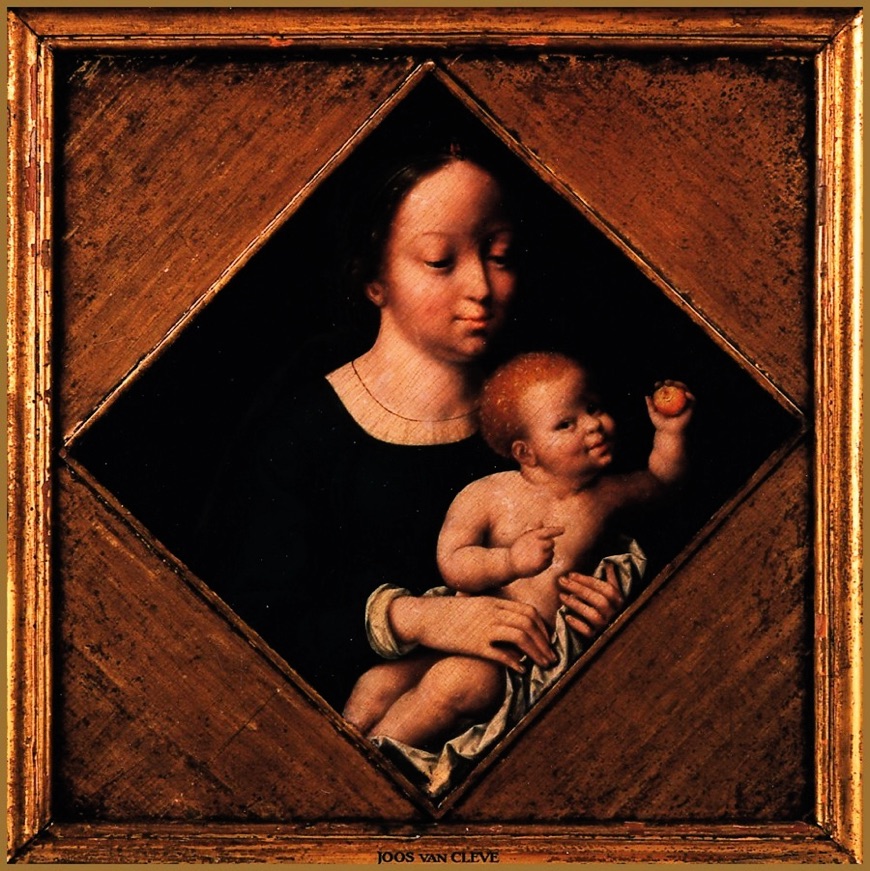Joos van Cleve c.1464-1540 Antwerpen
Mary with Child
A strikingly young Mary, recognizable by her blue dress, holds an obviously cheerful child on her lap. The boy looks at the spectator as if through a window, where he and his mother appear in the same world as ours. He is laughing most congenially and pointing with his right hand to the apple he is holding in his left hand. This fruit symbolizes the Fall: the tree of Good and Evil in Paradise bore apples which Adam and Eve were forbidden to eat. Despite this prohibition Eve took an apple, tempted by a snake, and tasted it, and asked Adam to taste it as well. The knowledge thus gained made it impossible for them to stay in Paradise, a state of bliss, and they were expelled by archangel Michael. The apple in the hands of Christ depicts him as the Saviour, for he redeemed original sin by his death.
Paneel
Cleve, Joos van (ca. 1464-1540, Antwerpen)
Zuid-Nederland, Antwerpen
Madonna met kind
ca. 1525
Het kind Jezus staat afgebeeld met een appel, zinnenbeeld van de overwinning van de zonde.
Een opvallend jonge Maria, herkenbaar aan haar blauwe jurk, houdt een opvallend vrolijke baby Jezus op schoot. Het jongetje kijkt de beschouwer rechtstreeks aan, alsof het schilderij een raam is en de afgebeelden in dezelfde wereld leven als de kijkers. Hij lacht vriendelijk en wijst met zijn rechterhandje naar de appel die hij in de linker houdt. Deze vrucht is in de kunst een symbool van de zondeval. De boom der kennis van goed en kwaad die in het Paradijs stond, droeg appels waarvan Adam en Eva niet mochten eten. Ondanks het verbod van God liet Eva zich door de slang verleiden er toch JJn te proeven. Vervolgens bracht zij Adam ertoe er ook van te eten, waarmee de zondeval een feit was. Wanneer deze appel is afgebeeld in de handen van het Christuskind, verwijst het naar diens rol als Verlosser. De erfzonde waar de appel de oorzaak en het symbool van is, zal hij immers met zijn dood weer




